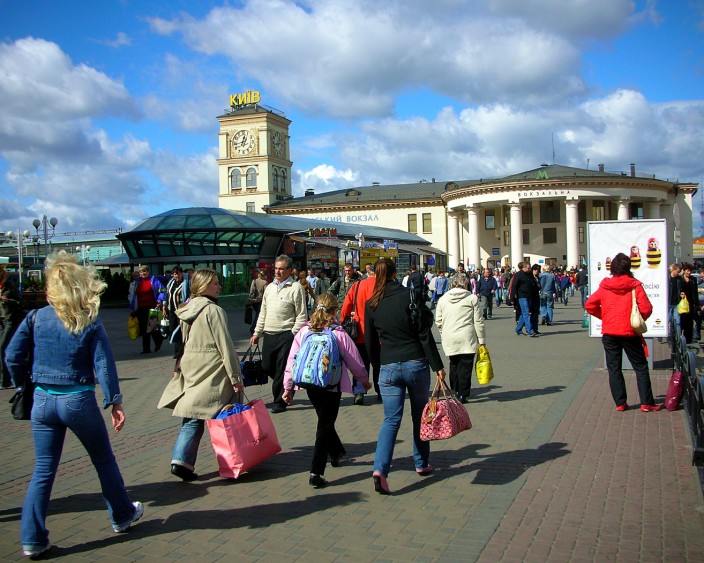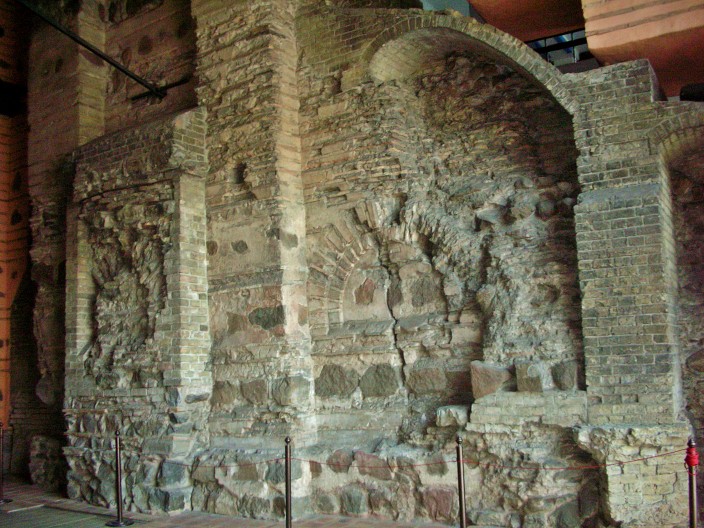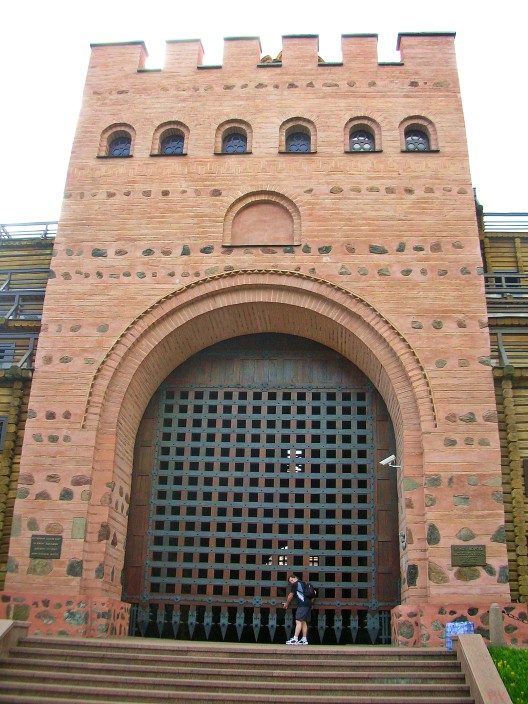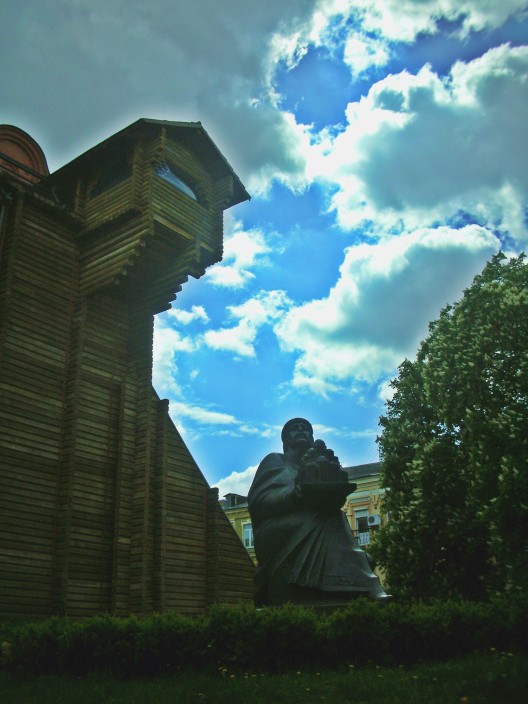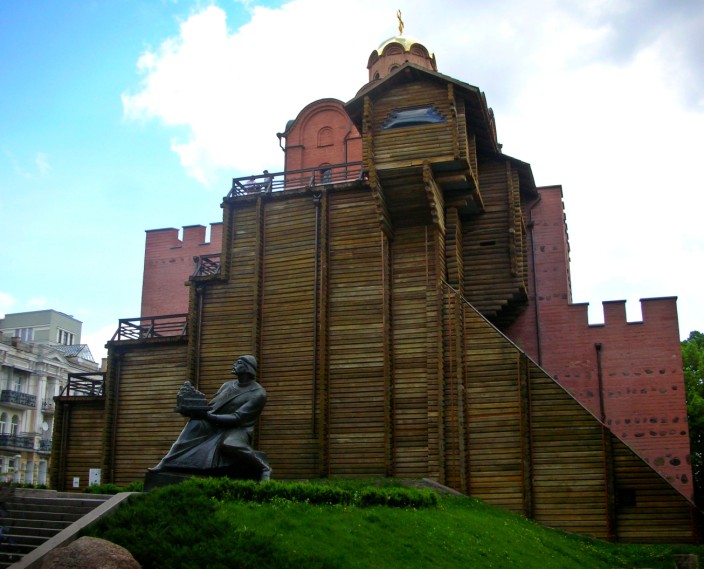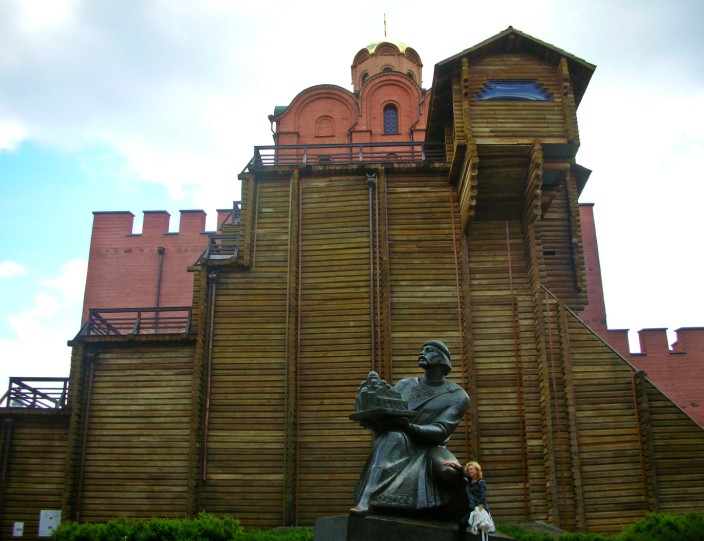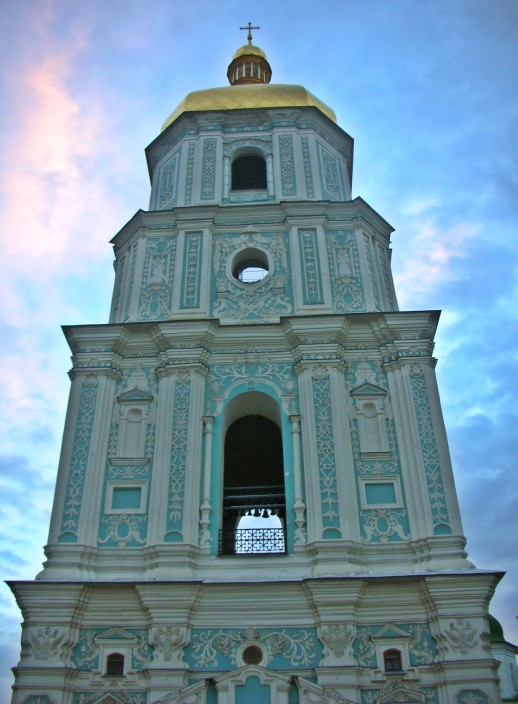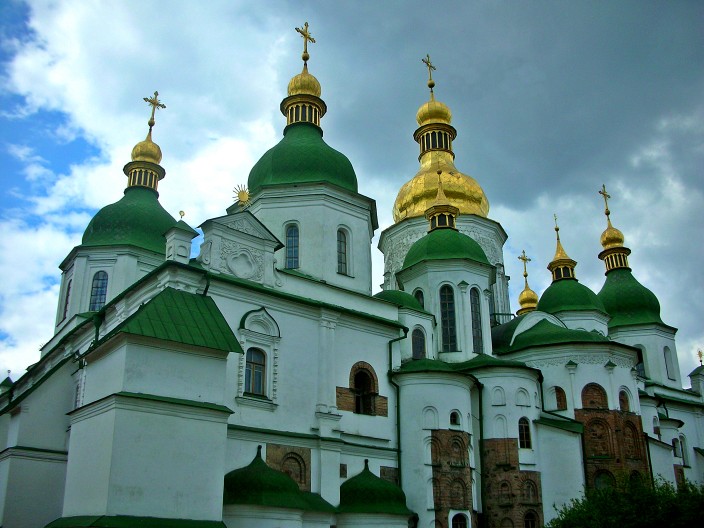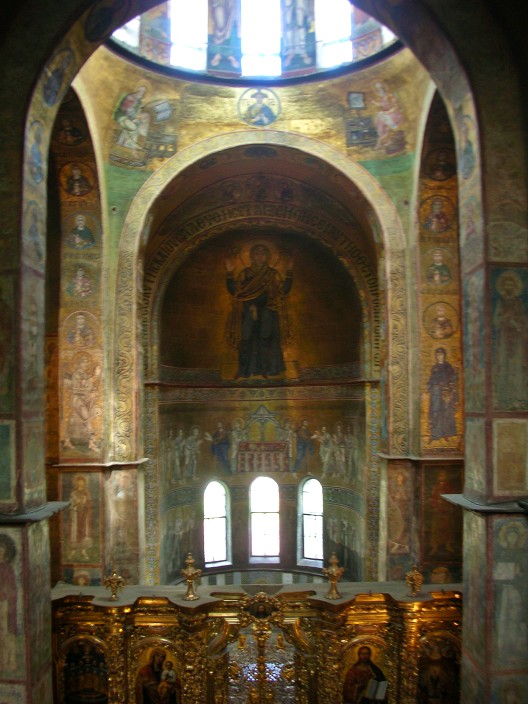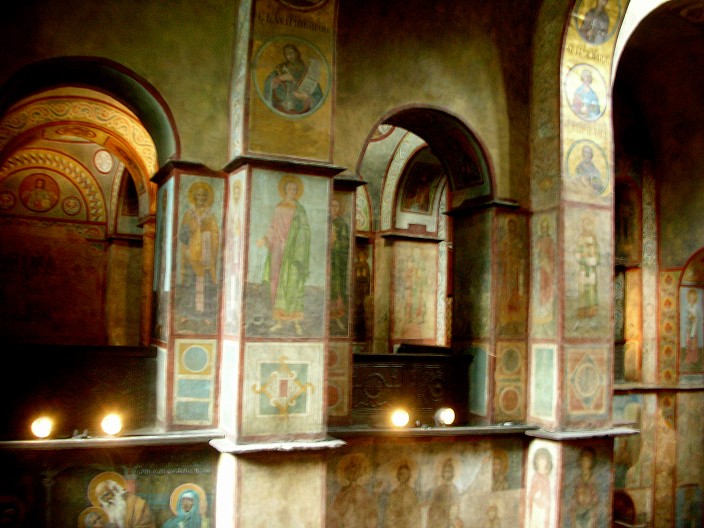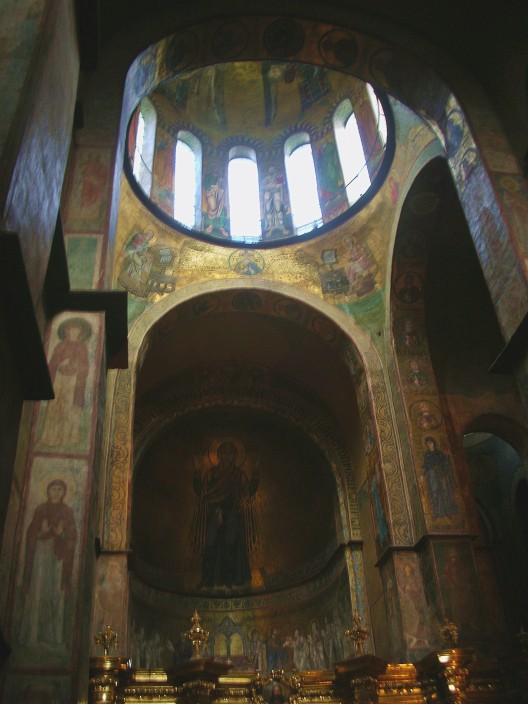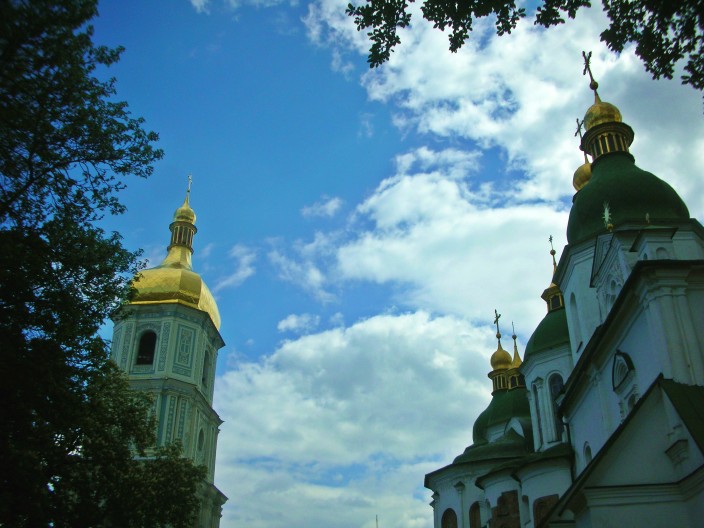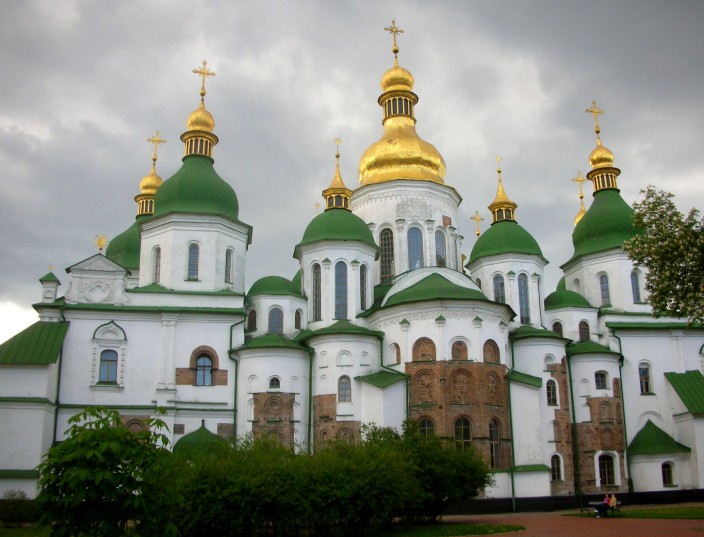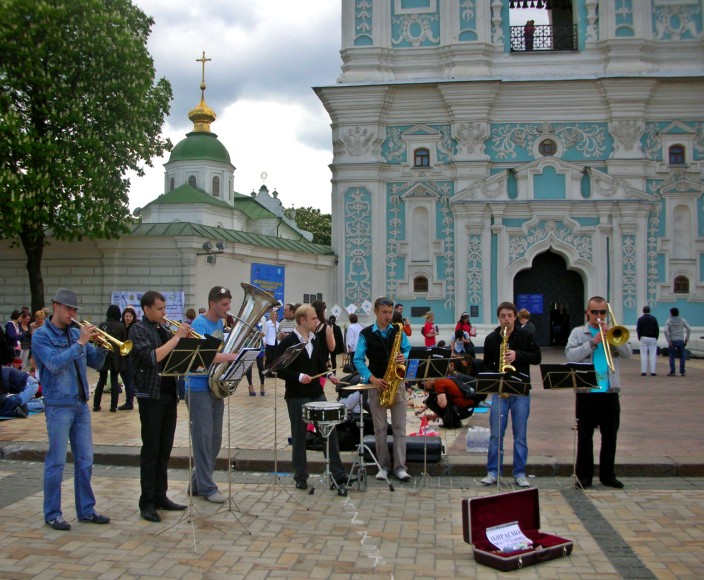Since you’ve most likely just flown into Kyiv, it would only make sense to spend at least a couple of days there. To not do so would be like flying into Paris and leaving town without taking in the sights of a grand and fascinating city.
First, a few facts. Kyiv is the capital and largest city of Ukraine by far, with a population of about three million. The founding of the city dates back to the sixth century, making it older than Moscow or just about any other city north of the Black Sea and east of present day Poland. According to legend it was founded by three brothers, Moe, Larry, and Curly. Or was it Groucho, Chico, and Harpo? Actually it was Kiy, Shchek, and Khoryv. Anyway, these three brothers built a town and named it for the eldest brother. In 882 a Viking leader of the Rus clan captured Kyiv and proclaimed it would be “the mother of all Rus cities,” strategically located midway along the important Viking trade route from Scandinavia to the Mediterranean. By the tenth century it was the capital of Kyivan Rus, a powerful empire stretching from the Baltic Sea in the north to the Black Sea in the south.
(Kyiv train station)
Kyiv is located in the north central portion of the country on the banks of the Dnieper River and lies at a latitude of 50 degrees 28 minutes north. If situated in North America this would place the city well north of the lower 48 states, at about the same latitude as Calgary, Alberta. As you might expect this produces some very cold winters, with prolonged snow cover possible from mid-November through March. Yet summers can be very hot and sometimes humid.
I’ve traveled through Kyiv at various times of the year and always found the weather quite pleasant, but then I haven’t been around in the dead of winter. May is a good time to visit, before the summer heat sets in and with the many trees all leafed out and looking very green indeed.
As in any large European city, there are grand sights to see, monuments, cathedrals, statues and the like. In general, Ukrainians are inordinately fond of statues and monuments, and the bigger the better. Most of these are Soviet era leftovers, so you could probably blame the Russians, especially for all the bronze Lenins. Curiously, I’ve found Lenin statues still standing in many different cities, but you won’t find a statue, image, or so much as a mention of Stalin anywhere in public save in museums. Seems old Uncle Joe is definitely persona non grata in the new democratic, free Ukraine, yet Lenin remains honored if no longer revered. Not hard to understand at all when you learn the story of Golodomor, the Great Ukrainian Famine of 1932-1933.
Ukrainians had resisted Stalin’s push for collectivization for many years. His final solution to usurp their land and force them onto the collective farms was to basically starve the very peasants who grew the grain. A hundred million tons of grain were shipped out of Ukraine to other parts of the Soviet Union during this time, while seven million Ukrainians starved to death in fifteen months, a third of them children. That’s a rate of seventeen dead every minute, 25,000 a day. Entire villages of defenseless peasants were simply wiped out by the slow, agonizing method of starvation.
This is a mind boggling genocide on the same horrific scale as the Nazi Holocaust of the Jews, yet it remains, in the West at least, a barely known slice of history. Of course this tragedy was completely suppressed within the Soviet Union until many decades later. In fact it was never officially recognized until 1998 when the Ukrainian President proclaimed an annual National Day of Rememberance of the Famine Victims. So, no, you won’t find a whole lotta love and fond memories for Stalin anytime soon in Ukraine.
One of my favorite activities whenever I’m in the country is to check out all the old stuff I can possibly visit, castles, cathedrals, churches, museums, etc. I guess I’m fond of all this because the U.S.A. is such a relatively young country that you simply can’t find anything older than two hundred years or so. And, to be honest, I’ve had an inexplicable fascination reaching all the way back to my childhood with all things medieval. Give me swords and horses and knights and castles being stormed and I’m hooked. Don’t know why, but there it is. So naturally when I’m somewhere as rich in history as Ukraine, these places are always at the top of my agenda, and if you, too, enjoy this sort of thing, you won’t be disappointed by what you find there.
(Remnant of original wall, Great Gate of Kyiv)
Kyiv is especially rich in this regard. One of the first places you want to visit is the famous Golden Gate of Kyiv. No, it’s not a bridge and I don’t think anyone’s jumped off of it to commit suicide, but it is a well known landmark and historical site. Built in the 12th century, it was the main gateway into the heavily fortified walled city, a place for the rulers to stop travelers, make sure they weren’t allied to some invading horde, and extort tribute (read: taxes) before allowing them to enter the city. Think of it as a combination Homeland Security and I.R.S. for the Middle Ages. Very little of the original gate still stands, having crumbled and succumbed to the ravages of time, disinterest, and conquest long ago. In fact you have to go inside the recently reconstructed façade covering the remnants of original brick and stone to see what little remains intact.
(Let me in! Outside reconstructed facade of the Great Gate)
(Statue of Yaroslav the Wise, Grand Prince of Kyiv in 1037 when the Gate was constructed)
(Yaroslav and his Gate)
I wanted to see it because it served as the inspiration for part of Mussorgsky’s “Pictures at an Exhibition,” one of my favorite pieces of music, with it’s epic, towering closing movement titled, appropriately enough, “The Great Gate of Kiev.” They have a nice display inside depicting the history of the gate through various centuries with a soundtrack of…yes, that’s right, a heavily synthesized “pop” version of Mussorgsky’s “Great Gate of Kiev” music playing in the background. Would it be so hard to just play a real orchestral version? Apparently, it would.
(The Great Gate of Kyiv)
Leaving the Golden Gate, you can hoof it to St. Sophia Cathedral, less than half a mile away. With it’s pale blue and white bell tower, expansive tiled square outside the entrance, and the domed peaks of the church jutting into the sky, it’s an impressive sight not to be missed during your stay in Kyiv. The admission price is not steep, but the climb up the bell tower stairs certainly is. Recommended for the view, but it’s not for the out of shape.
(Bell Tower of St. Sophia)
(St. Sophia Cathedral)
Back on the ground, you can stroll at your leisure around the compound, making sure to stop in at the dormitory residence hall of the Metropolitans – the Orthodox high priests – where you can see how these guys lived like kings throughout the centuries while your average peasant barely scraped a subsistence living from the land. Judging by the accomodations, these were not priests who lived under monkish vows of poverty. When you see enough of this disparity in the opulence of the churches and the palaces of the czars and nobles compared to the harsh and brutish life of the common folk, it isn’t hard to understand why there was a revolution. It’s just a shame the ruling class and the Church were replaced by something even worse, the Bolsheviks, and seventy years of Communist dictatorship and oppression.
(Forbidden photos inside St. Sophia Cathedral)
Entering the main church, you’re struck by two things. One, you’re not allowed to take pictures (I snuck some anyway) and two, the lack of pews, chairs, or anywhere to park your butt. This is, of course, a westerners view of things, and coming from a Roman Catholic background it took me a while to get used to this. But now I actually like the openness of the Orthodox churches and have to admire the cleverness of their clergy. What better way to prevent your congregation from dozing off during the sermon than to make them stand through the entire service?
(More forbidden photos)
(Yet another forbidden photo – can I get arrested for this)
(Bell Tower and Cathedral)
The foundations of St. Sophia Cathedral were laid in 1037, but it took a couple of decades to finish. Over the centuries it has passed through the hands of different rulers and church bodies, and it wasn’t actually completed in its present form, combining Byzantine and Ukrainian Baroque styles, until 1740. Adorning the cathedral walls throughout are elaborate mosaics and frescoes, some of them dating back to the earliest days of the church, and judging from their condition, I can believe it. What they really need is a good scrubbing with a Brillo pad and some serious elbow grease. Just kidding. They are in the process of restoring some of them but as always in this sort of work it’s slow and painstaking.
(Domes of St. Sophia)
(Buskers in the square outside St. Sophia)
The Commies wanted to demolish the whole place, naturally, but unlike many religious sites during the Soviet era, St. Sophia was saved from the wrecking ball and preserved by the efforts of scientists and historians, and designated as an architectural and historical museum. Today there are still various church groups fighting over St. Sophia and as no one organization has been given charge, the whole thing is run by the government primarily as a tourist attraction, with the occasional religious service allowed to be performed.
To be continued….
